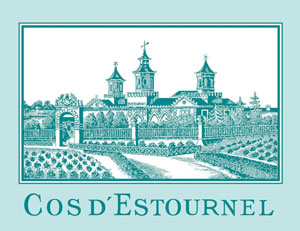| Region | |
|---|---|
| Subregion | France > Bordeaux > Bordeaux Generic |
| Colour | White |
| Type | Still |
Less than 1000 cases are produced annually of Cos d'Estournel's white wine which is made from grapes grown in the Goulée vineyard in the Northern Medoc. The vineyard is planted with 80% Sauvignon Blanc and 20% Semillon. First produced in 2005 and now there is also a second wine - Pagodes de Cos Blanc. The 2018 was made from 67% Sauvignon Blanc, 33% Semillon and was aged in oak for 5 months with 10% new barrels.
View all vintages of this wine | View all wines by Cos d'Estournel

Sliced-apple and lime with some aniseed and licorice. Iodine, too. Full-bodied with linear acidity and a fine tannin structure that goes on for minutes. 65% sauvignon blanc and 35% semillon. This is fantastic and so delicious now, but can age for a very long time. Drink or hold.
The 2019 Cos d'Estournel Blanc is a blend of 65% Sauvignon Blanc and 35% Semillon. It slowly emerges with notes of lime blossom, mandarin peel, and lemongrass over a core of grapefruit and lemon meringue pie with a touch of wet slate. Medium-bodied, the palate is all class, with vibrant citrus layers supported by crisp acidity and a touch of oaky grip, finishing with impressive length.
From holdings in the north of the Médoc and incorporating an increasing percentage of Sémillon, the 2019 Cos d'Estournel Blanc offers up aromas of pear, confit citrus, lemon grass and pastry cream, followed by a full-bodied, ample and fleshy palate that's rich and enveloping, with lively acids and a long, saline finish. This is a fine effort that could embarrass plenty of Pessac-Léognan whites. - drink 2021-2029
Cos d'Estournel may neighbor Lafite-Rothschild, but its vineyards are very different, rising from the banks of the Jalle de Breuil—the small stream that divides Pauillac and Saint-Estèphe—to a height of fully 26 meters above sea level. Cos's clay-gravel vineyards occupy the plateau on top, as well as straddling the slopes, scrolling round the hillside from the east-facing holdings overlooking Lafite to fully south-facing holdings that look out over the Gironde. It's surely this variety of expositions—as well as an average vine age of 55 years—that lend the wine its completeness and plenitude. Soil studies, undertaken in 2003, inform parcel-by-parcel farming and winemaking, as well as replanting, where Cos's important percentage of Merlot is gradually tending to diminish. The last two decades have witnessed considerable evolution: herbicides were banished and experimentation with cover crops began in 2002; a new gravity-flow winery was built in 2008; and winemaking and picking dates have evolved. In the past, the wines sometimes flirted with extremes; but in pushing the boundaries, sometimes one exceeds them. Today, harvest is a touch earlier than was the case a decade ago; fermentation temperatures are cooler and the wines racked less frequently; and percentages of new oak are both much more modest, in 2019 amounting to only 55% (mainly from Taransaud, Fraçois Frères and Berthomieu) and, above all, much less heavily toasted. The result? Wines of greater textural refinement and more vibrant fruit flavors, with as much intensity of flavor and persistence as ever. I suspect, what's more, that today's more reductive élevage will see them age very well indeed. Proprietor Michel Reybier is surely proud that two decades of unremitting investment in quality are today consistently delivering some of the Médoc's very finest wines.
One of the best Cos Blancs for years, this is a real return to form, a great white wine that has presence and impact. Fantastic balance of rich, textured stone fruit with a fresh finish. You'll find salinity, slate texture, jasmine flowers and white pepper spice. It was a warmer year overall than 2017, and the white vines needed rain, which they got eventually but relatively late, meaning half the harvest was done on before the rain, and the other half after some freshening rainfall, which perhaps accounts for this unusual but rather beautiful marrying of the two styles. Concentrated, powerful, balanced and complex. Love it. Drinking Window 2021 - 2035
The 2019 is a blend of 88% Sauvignon Blanc and 12% Semillon. Grapefruit and white flowers on the nose, very fresh and enticing. The palate is zippy, with tangy layers of citrus and orange fruits. There is a hint of waxyness, but the emphasis is on freshness, bolstered by a lick of spice on the finish.
65% Sauvignon Blanc, 35% Sémillon. Barrel sample.
Intense and more restrained than the white Pagodes. More of a white-fruit/pear aroma. Round, ripe and opulent on the palate. Almost seems like there’s some residual sugar but it’s definitely dry and the pH low (3.15). Clean finish. (JL)
Drink 2022 – 2028
This is incredibly long and refined with a compact structure and beautiful tension. It goes on and on. It’s full-bodied, yet tight and energetic. Lovely bitterness and brightness. Lemons, stones and limes. Flint, too. The grapes were harvested at three different moments. It’s beautifully constructed.